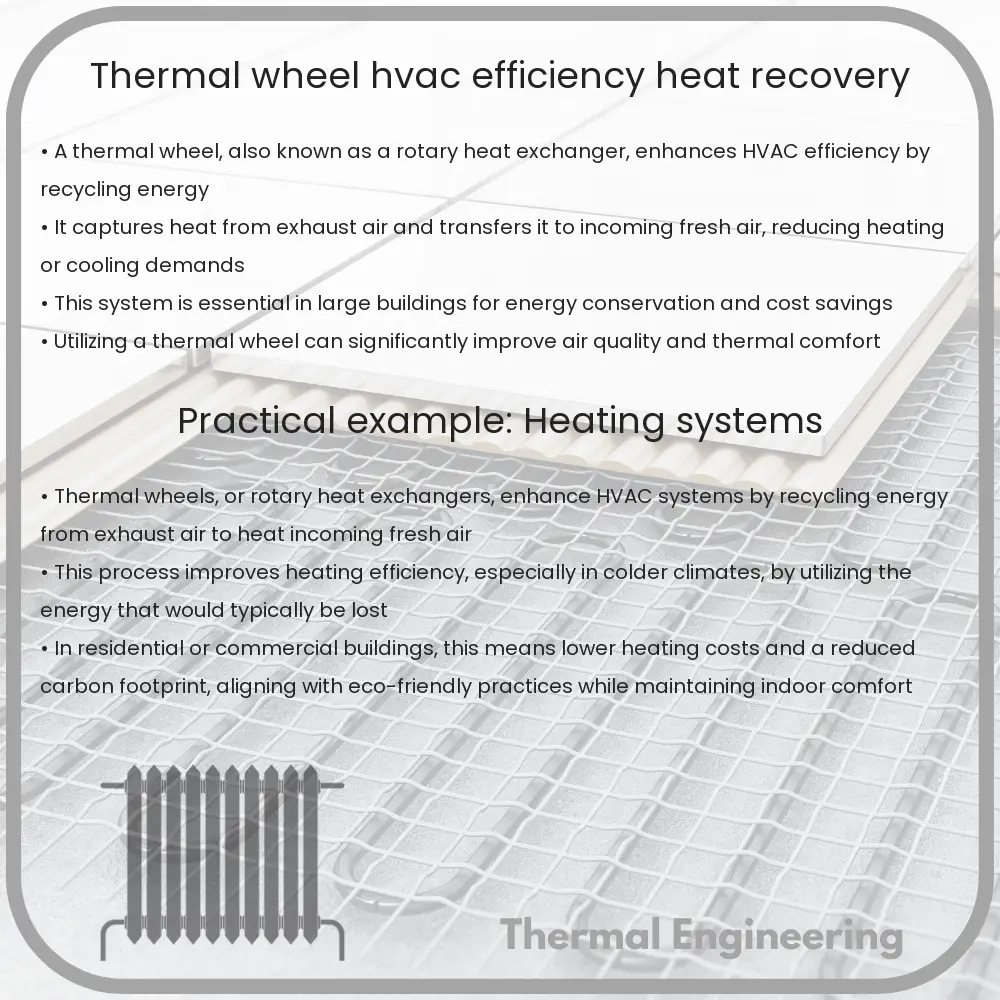Learn how a thermal wheel enhances HVAC system efficiency by recovering heat and controlling humidity in buildings.

Understanding the Thermal Wheel in HVAC Systems
Heating, Ventilation, and Air Conditioning (HVAC) systems play a crucial role in maintaining indoor comfort in residential and commercial buildings. One of the key components that enhance HVAC efficiency is the thermal wheel, also known as a rotary heat exchanger or energy recovery wheel. This device significantly improves energy efficiency by recovering heat from exhaust air and using it to pre-condition incoming fresh air. Let’s explore how a thermal wheel works, its benefits, and its applications in HVAC systems.
How Does a Thermal Wheel Work?
A thermal wheel consists of a large, circular matrix that rotates slowly between the incoming and outgoing air streams in an HVAC system. As the wheel rotates, it absorbs heat and moisture from one air stream and transfers it to the other. This process predominantly relies on two primary physical phenomena: heat conduction and latent heat transfer.
- Heat Conduction: As the warmer air passes by one half of the rotating wheel, the heat is conducted through the wheel material (usually metal or synthetic fiber) and is stored temporarily.
- Latent Heat Transfer: If the air has moisture, the wheel can also absorb or desorb moisture, helping in maintaining optimal humidity levels in the conditioned space.
The effectiveness of a thermal wheel depends on several factors, including the rotational speed of the wheel, the properties of the matrix material, and the surface area available for heat exchange.
Benefits of Using a Thermal Wheel
Integrating a thermal wheel into an HVAC system brings numerous benefits:
- Energy Savings: By recovering heat from the exhaust air, thermal wheels reduce the demand on heating and cooling systems, leading to significant energy savings.
- Improved Indoor Air Quality: Since thermal wheels enable the exchange of fresh outdoor air with indoor air, they help in maintaining better air quality inside buildings.
- Humidity Control: The ability to transfer moisture along with heat helps in controlling the humidity levels, creating a more comfortable indoor environment.
- Reduced Carbon Footprint: By optimizing energy use, thermal wheels contribute to lower carbon emissions associated with heating and cooling processes.
Applications of Thermal Wheels in HVAC Systems
Thermal wheels are used in various applications across multiple industries where ventilation and air conditioning are crucial:
- Commercial Buildings: Offices, shopping centers, and other large buildings utilize thermal wheels to enhance HVAC efficiency and comfort for occupants.
- Industrial Facilities: Factories and warehouses with high thermal loads benefit from the heat recovery capabilities of thermal wheels, maintaining better control over temperature and air quality.
- Residential Complexes: Multi-unit residential buildings also use thermal wheels to improve energy efficiency while ensuring sufficient ventilation.
Challenges and Considerations
Despite their benefits, thermal wheels do have some challenges that need careful consideration:
- Cross-contamination: If not properly maintained, there is a risk of contaminant transfer between the exhaust and intake air streams.
- Maintenance Requirements: Regular cleaning and maintenance are necessary to preserve the efficiency and longevity of the wheel.
- Initial Cost: The upfront cost for integrating a thermal wheel into an existing system can be significant, though it is often offset by the operational savings.
In conclusion, the thermal wheel is a pivotal component in modern HVAC systems, providing substantial energy savings and comfort enhancements. As technology progresses, further improvements in material science and control strategies are expected to increase the effectiveness and applications of thermal wheels in energy recovery and HVAC efficiency.